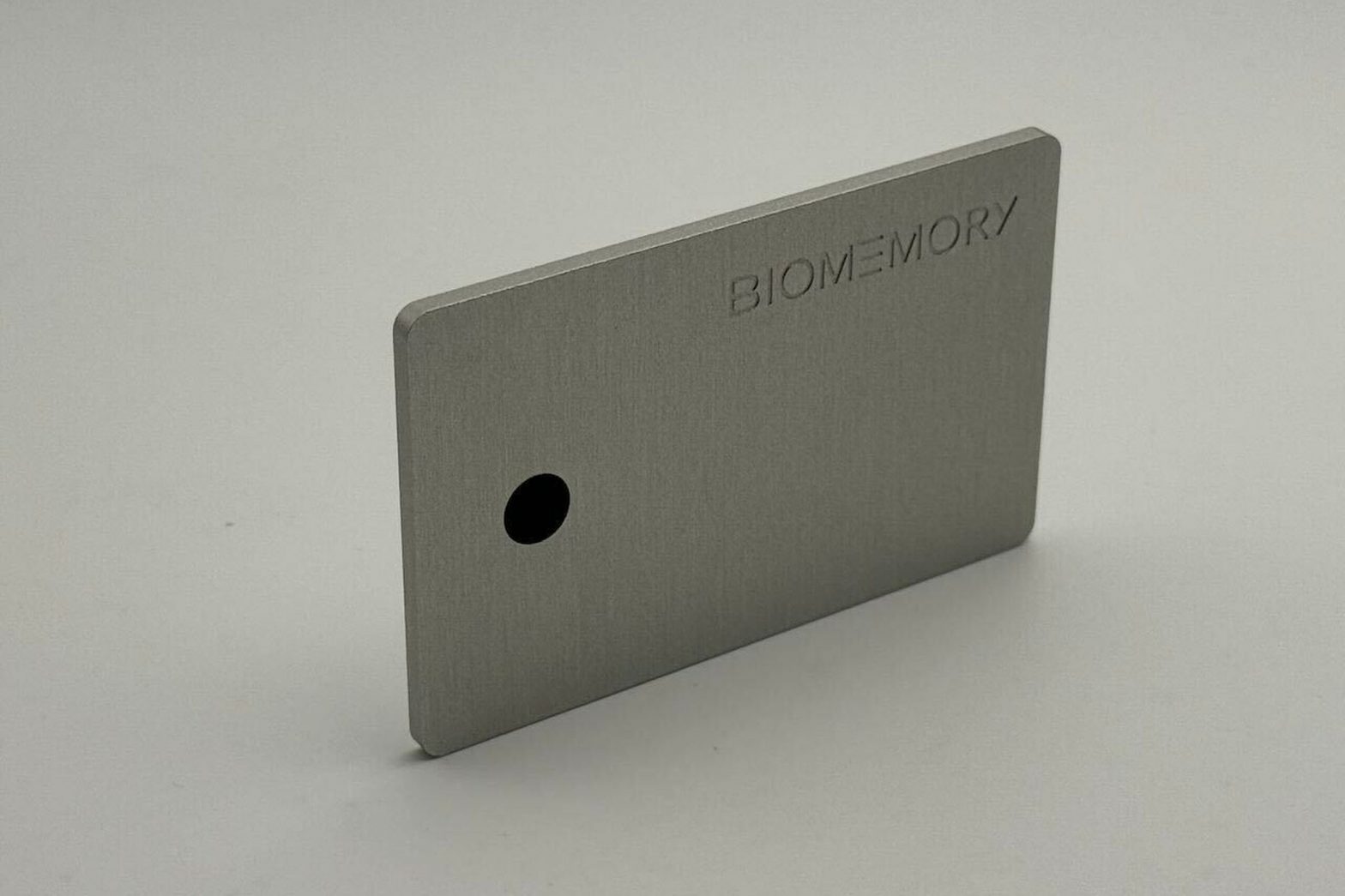/
A startup called Biomemory is selling a pricey DNA-powered storage solution that houses just one kilobyte of data.
Share this story
:format(webp)/cdn.vox-cdn.com/uploads/chorus_asset/file/25132030/Biomemory_card_release.jpeg)
DNA data storage might sound like a far-off solution. But a startup called Biomemory is bringing it a little closer to reality with the release of new DNA cards that anyone can purchase — if you have $1,000 to blow.
DNA has emerged as a theoretical alternative to hard drives, SSDs, and other forms of digital data storage, namely because of its impressive lifespan. Science estimates the technology could potentially last hundreds of thousands of years if stored in a cool, dry environment. That’s a heck of a lot longer than the lifespan of your average hard drive, which typically tops out at around five years.
Biomemory’s DNA cards promise a “minimum” lifespan of 150 years. The $1,000 price tag includes two identical cards, each of which comes with one kilobyte of storage. That amounts to around the length of a short email, according to Wired’s profile of the company, so you can’t expect to store a trove of photos, videos, and documents with the card just yet. Still, it’s the closest we’ve seen to making DNA storage available to consumers.
This storage system works by converting digital information to the elements that make up DNA: adenine (A), cytosine (C), guanine (G), and thymine (T). You can see how this might work on the “DNA Translate” feature at the bottom of this Biomemory webpage, which shows how a line of text might be converted to a string of A’s, C’s, G’s, and T’s.
After the encoding process, Biomemory creates a unique strand of DNA by “chemically synthesizing it base by base to match the desired sequence” — a process that takes about eight hours for one kilobyte of data, according to Wired. From there, Biomemory dries out the data and sticks it on the circular chip on its DNA card, which Wired says is sealed to keep out oxygen.
When you’re ready to retrieve the data, you must send in one of the two DNA cards to Biomemory’s partners at Eurofins Genomics. You’ll then receive your string of A’s, C’s, G’s, and T’s by email that you can decode using Biomemory’s DNA translation feature. You won’t get the card back after the data has been decoded, which is why you get a copy. The card is effectively useless if you don’t send it to the lab (or happen to have a DNA sequencer on hand).
“After years of talk about the potential of molecular computing, we are incredibly proud to bring the first DNA data storage product to market, that not only pushes the boundaries of innovation but also aligns with our commitment to environmental sustainability and efficiency,” Biomemory CEO Erfane Arwani says in a statement. You can sign up for Biomemory’s waitlist now, with orders expected to ship in January.
We’re still pretty far away from capitalizing on all the possibilities DNA storage has to offer. As estimated in this report from Science, one gram of DNA can hold a whopping 215 petabytes — or around 215 million gigabytes — in a container that has roughly the same size and weight as two pickup trucks. But until we move past needing hours of lab work on both ends, DNA storage will likely be stuck as an experiment storing music videos, short clips, photos, or small lines of text.
